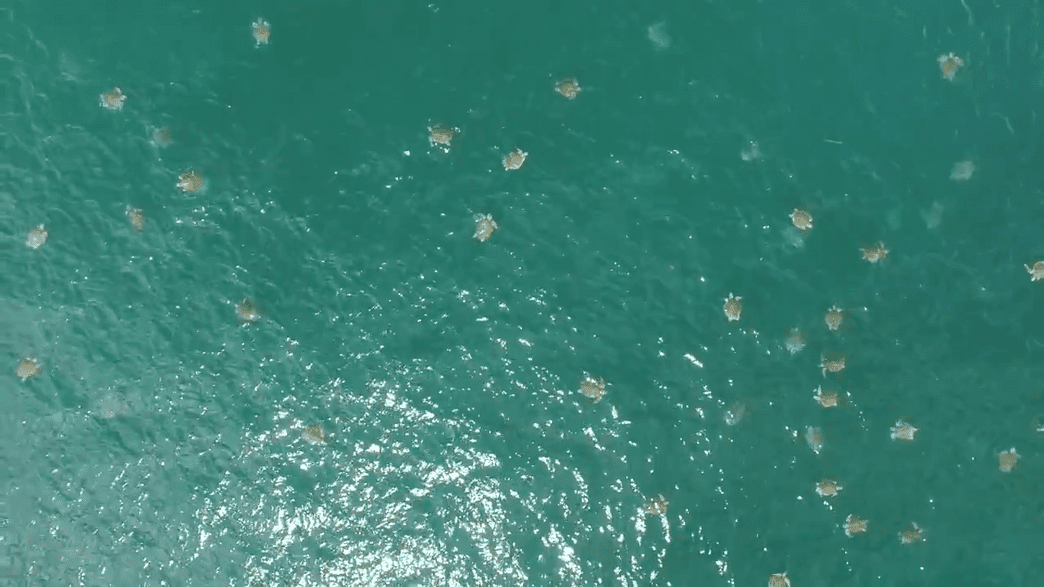Prepare to be amazed by the incredible footage captured by biologist Vanessa Bézy. In November 2016, Bézy filmed what may be the largest swarm of sea turtles ever caught on camera, and it’s absolutely breathtaking.
Costa Rica’s Ostional National Wildlife Refuge is a haven for hundreds of thousands of female sea turtles each year. These turtles make their way to the refuge to lay their eggs on the beach, creating the second-largest gathering of turtles in the world during egg-laying season. Only Mexico’s Oaxaca has more.
The swarm of sea turtles captured in the footage, mostly olive ridleys, was spotted by Bézy, who has dedicated years to studying these mass arrivals known as arribadas. She immediately knew she had stumbled upon something extraordinary.
“I immediately knew there was something special going on,” Bézy told National Geographic. “To this day I’m still blown away by the video. They look like bumper cars out there.”
Bézy has released this footage to shed light on the threat of tourism to this vital turtle refuge. While there are currently protections in place, she believes that more regulations are needed due to the rapid development in and around Ostional. These regulations would ensure the safety of this remarkable turtle population.
According to the video, on the day of filming, there were approximately 5,000 turtles in an area the size of a football field, covering a total area of over 1,000 football fields. The density was roughly one turtle for every square meter, and it’s believed that even more turtles were present beneath the waves.
The reasons behind the turtles’ gathering and their ability to return to the beach where they were born remain a mystery. One theory suggests that they use the Earth’s magnetic field as a guide. Additionally, this particular beach in Costa Rica may have advantageous sea currents or a specific type of sand preferred by the turtles.
The large numbers of turtles gathering could be attributed to the concept of strength in numbers, as the survival rate for hatchlings is famously low. For olive ridleys, which are the second smallest sea turtle species and lay around 100 eggs, only 0.2 percent of the eggs will survive to hatch, and just 1 percent of those will reach adulthood.
Arribadas typically last for five nights, and the incubation period for the eggs is around 45 days. This incredible phenomenon occurs like clockwork between August and October each year, making it a popular destination for tourists. However, the rapid growth of settlements and hotel development in the region poses a threat to the turtles and their nesting site.
By sharing this footage, Bézy hopes to emphasize the uniqueness of the region and the urgent need for its protection.
[H/T: National Geographic]








